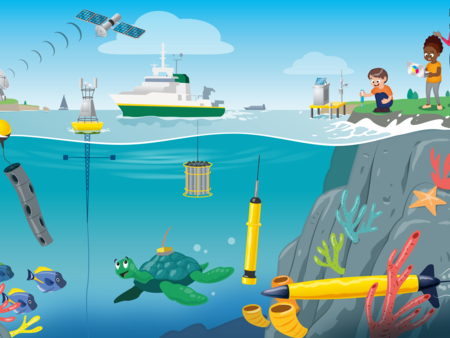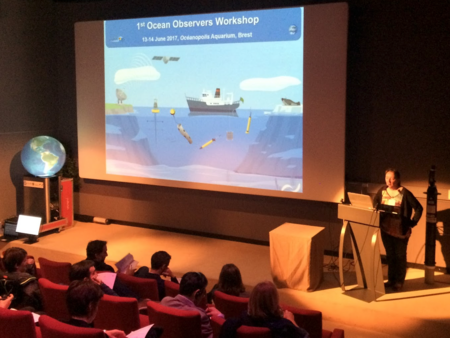Experiment how an Argo float moves [video]
Understand how Argo floats move using a Cartesian diver model
Individual or group activity
Duration: 40 min
Type of activity: experiment
Language: English
Material required: a bottle of water, a straw, a paper clip, a bowl of water, some plasticine or Blu-Tack
Follow the step by step experimental protocol in this video to understand how Argo floats work using a Cartesian diver.
At the beginning, there is just enough air in the diver (the straw) to make it positively buoyant. When the bottle is squeezed, the water seeps into the flexible straw, compressing the air trapped inside. This causes an increase in density that will be sufficient to cause the diver to sink to the bottom of the bottle. On the contrary, by releasing the bottle, the water forced inside the straw will be released, which will decrease the density and therefore the diver will rise to the surface.
The Cartesian diver experiment helps understand the notion of buoyancy also present in the mechanism used by Argo floats to move up and down.
The activity sheet provides the instructions to carry out this experiment.
Follow-up with a quiz:
How do Argo floats observe the oceans? (9-11)




